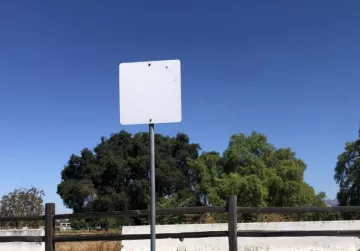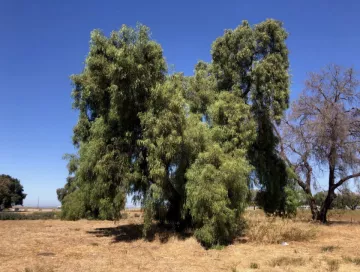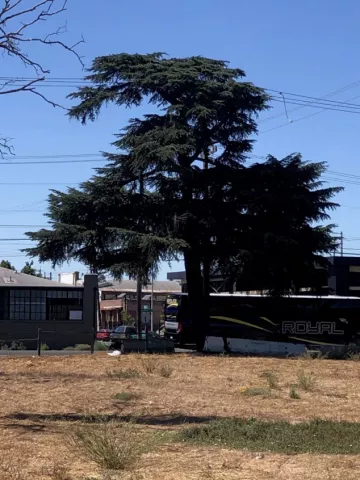September 16, 2024
Nhu Nguyen
Environmental Project Manager
City of San Jose, Department of Planning, Building, and Code Enforcement
Nhu.Nguyen@sanjoseca.gov
RE: Draft EIR for Rezoning of Airport Parcels and GPA (PDC23-009, GP18-012 & ER23-056)
Dear Ms. Nguyen,
The Santa Clara Valley Bird Alliance (formerly Audubon Society) and the Sierra Club Loma Prieta Chapter are environmental organizations that work to protect natural resources and promote the enjoyment of nature. We appreciate the opportunity to comment on the Draft Environmental Impact Report (DEIR) for the General Plan Amendment and Planned Development Rezoning for the Coleman and Hedding Commercial Development Project. The Project proposes to change the existing Envision San José 2040 General Plan Land Use Designation of Open Space Parks Habitat (OSPH) to Combined Industrial Commercial (CIC) for seven parcels and to rezone those parcels to the OS (PD) Planned Development Zoning District. Please find our comments below.
- Impacts to the Burrowing Owl
Significant Impact Bio-1: Construction activities on the subject parcels could impact burrowing owls by trampling or compacting underground burrows. Mitigation for this impact is described in MM BIO-1.1, which states, “Prior to the issuance of any grading, building, or demolition permits for development projects on the subject parcels, a qualified biologist shall conduct preconstruction surveys.“- Comment: Preconstruction surveys must be performed prior to the actual ground disturbance or any activity that could disturb burrowing owls or occupied burrows on the site and its vicinity, not prior to issuance of permits. Surveys prior to issuing a permit are irrelevant, since work may start at any time, days, months or years after the issuance of such permits.
- Burrowing owls have occupied the airport and its vicinity in the past, and a pre-construction survey 14 days prior to ground disturbing activities or the issuance of any tree removal, grading, demolition, or building permits can help the project plan ahead, but it should not replace the need to conduct a survey for burrowing owls within a week prior to such activities. The Valley Habitat Plan survey protocols should be used to mitigate harm to burrowing owls.
- By the time the Project is approved, the burrowing owl population of the Bay Area is likely to be recognized as a candidate for listing under the California Endangered Species Act. The mitigations proposed in DEIR should reflect this new status.
- Impacts to Nesting Birds
The Biological Resources Report (Appendix C) recommends that if construction is scheduled during the nesting season (February 1 and August 31), then pre-construction surveys be conducted no more than seven days prior to the initiation of demolition or construction activities. This recommendation is adequate to minimize harm to the many species of birds that could nest in this area.
However, in MM Bio-2.2 the DEIR proposes to mitigate for harm to nesting birds by implementing a pre-construction survey no more than 14 days prior to the GPA/Rezoning on Airport Parcels during the early part of the breeding season (February 1st through April 30th) and no more than 30 days prior to the initiation of these activities during the late part of the breeding season (May 1st through August 31st). This mitigation measure is biologically irrelevant, does not reduce the impact to less-than-significant level, and is likely to result in harm to nesting birds and a violation of the Migratory Bird Treaty Act and California Fish and Game Code.
Many bird species (including burrowing owls) can build a nest and initiate egg-laying within as little as 10 days. Therefore, a nesting bird survey conducted up to 14 days prior to construction is insufficient to avoid significant impacts to nesting birds. Even more concerning is the provision allowing for a survey up to 30 days before construction activities during the latter part of the breeding season (May 1 through September 15). This fails to account for the biology and nesting behaviors of bird species that- Initiate Nesting Later in the Season: Some local species do not start nesting until after May 1. A survey 30 days in advance would not detect these nests.
- Reinitiate Nesting Attempts: Birds whose nests fail early in the season often attempt to nest again. A 30-day-old survey would not account for nests established after the initial survey.
- Have Multiple Broods: Many species have multiple broods in a single season.
MM Bio-2.2 does not provide adequate protection for nesting birds and fails to adhere to the best practices necessary to minimize significant impacts effectively. Because of the location of the Project adjacent to the Guadalupe River Corridor and open space, avoidance of the nesting season is advisable. However, if construction is to occur during the months of February through August, to better address the potential impacts on nesting birds, we suggest the following pre-construction survey requirements.
- Conduct Pre-Construction Surveys: Conduct pre-construction nesting bird surveys no more than 7 days prior to the initiation of construction activities (including tree removal, demolition and any other work on the site) during the nesting season (February through August). Conduct a new survey within 7-days of any new phase or section of construction. If work ceases for 7 days or more, conduct a new survey. If the initial survey identifies active nests: follow-up surveys should be conducted until the nests have been vacated and the young have fledged and no longer depend on the nest.
- Tree Removal and Tree Replacement
These comments relate to the following Envision San Jose 2040 General Plan policies.- Policy MS-21.4. “Encourage the maintenance of mature trees, especially natives, on public and private property as an integral part of the community forest. Prior to allowing the removal of any mature tree, pursue all reasonable measures to preserve it.”
- Policy MS-21.1. This policy seeks to manage the urban forest to meet environmental goals for wildlife habitat preservation, heat reduction in urban areas, and removal of carbon dioxide from the atmosphere.
- Envision San Jose 2040 policy MS-21.8 seeks to preserve “Incorporate native trees into urban plantings in order to provide food and cover for native wildlife species.”
The DEIR states that 67 trees are scattered throughout the subject parcels. If most or all of these trees are removed, that could result in substantial impacts to biological resources (habitat), carbon sequestration, and heat mitigation benefits these trees provide. This area of San Jose, even outside of the airport safety zones, is already an especially tree-deprived area. The loss of existing trees is, for this reason, especially concerning. Therefore, in order to avoid conflict with General Plan policies, mitigation measures regarding tree removal should include the following.
- Pursue all reasonable measures to preserve mature trees. There are at least three mature trees on the parcels that should be preserved: an oak tree on Parcel 2, a pepper tree on Parcel 1, and a pine tree on Parcel 5 (see Attachment 1 for photos).
- To retain the benefits of these and other mature trees for as long as possible, any necessary tree removals should not take place until the start of construction.
- Require that any proposed project be designed to accommodate existing mature trees and onsite tree replacement. This is critically important since data indicates San Jose is losing tree canopy and hence failing to meet General Plan MS-21.2 (Provide appropriate resources to preserve, protect and expand the City’s Community Forest). This is also important to mitigate extreme heat and carbon dioxide impacts, and achieve carbon neutrality by 2045.
- Require use of native trees for onsite tree replacement as much as possible. Native species support more biodiversity and will be more adapted to the local climate to ensure better survival.
Thank you for your consideration of these comments.
Sincerely,
Shani Kleinhaus, Environmental Advocate
Santa Clara Valley Bird Alliance
Katja Irvin, Guadalupe Group Conservation Chair
Sierra Club Loma Prieta Chapter
Draft EIR for Rezoning of Airport Parcels and GPA
Santa Clara Valley Audubon and Sierra Club Loma Prieta Comments
Attachment 1. Examples of Mature Tree to Preserve
Oak Tree on Parcel 2

Pepper Tree on Parcel 1

Pine Tree on Parcel 5
